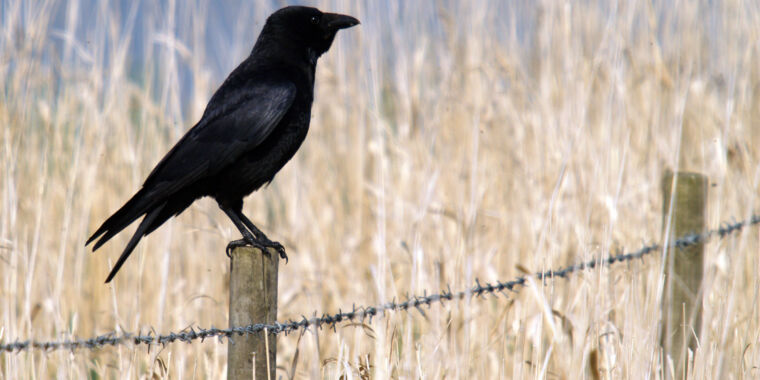
Behavior that we would consider intelligent is strangely widespread in the animal kingdom. Animals with very different brains from ours – some kind of octopus and different birds – use tools, just to give one example. It seems intuitive that a brain needs a certain level of size and sophistication to enable intelligence. But figuring out why some species seem to have intelligence, while closely related species don’t, has proven difficult — so difficult that we don’t really understand it.
One of the simplest ideas was that size is everything: you have a big enough brain and at least you have the potential to be smart. But many birds seem to be quite intelligent despite small brains, possibly because they cram more neurons into a given volume than other species. Some researchers favor the idea that intelligence comes from having a large brain in relation to your body size, but the evidence there is a bit mixed.
This week, a team of researchers published a paper stating that the answer is a bit of both: relative and absolute size matter when it comes to the brain. And they claim that a specific approach to brain development makes this possible.
What makes smart?
To study what makes intelligence, you need to define the word. And that can be a slippery thing to nail down. We all know (and/or are) people who are brilliant in some circumstances and idiots in others. Likewise, an animal may engage in tool use but be unable to figure out how to make its way around a simple barrier. So defining intelligence in different ways can yield different answers as to whether a particular species qualifies.
For the current work the focus was on the mental facilities of birds. The researchers defined intelligence as innovation or the tendency to exhibit new behavior. (Owls had to be excluded from the study because their behavior is difficult to observe.) The number of articles reporting innovative behavior was normalized by dividing it by the total number of articles describing any behavior in the species to correct for the fact that some just better studied than others.
The researchers then compared that to brain functions with three questions in mind. One was whether intelligence correlated with specific areas of the brain — specifically an area called the pallium in birds, which appears to perform many of the same functions as the neocortex in humans. This area is where the brain integrates sensory information and plans activities.
Using a system that allows them to count the number of neurons in different brain regions, the researchers were able to test whether intelligence correlated with the size of the brain as a whole, with the pallium in particular, or with the ratio of brain size to body size. The research team could also look at the developmental history of the brain in intelligent species and try to understand how any correlations they discovered came about.
Por que no los dos?
In general, bigger brains meant more complicated behavior. “The number of neurons throughout the brain is positively associated with the propensity for behavioral innovation,” the authors conclude, “particularly technical innovations believed to require more sophisticated cognition.” But controlling for body size showed that relative brain size still mattered. If a species had more neurons than you would expect based on their body size, they were more likely to exhibit complex behavior.
The researchers suggest that we tend to see this as an either/or situation – it has to be either total brain size or the brain-to-body ratio. By designing our analyzes to compare the two, we have limited our ability to identify that both correlations appear to be true at the same time. When specific brain regions were analyzed independently, the pallium was the most significant region associated with complicated bird behavior; the cerebellum also contributed, but to a lesser extent.
Consistent with the general conclusions, the number of neurons in the pallium increased with both absolute brain size and brain size relative to body size. Neurons in the cerebellum went up largely as a function of absolute brain size. And there was no clear pattern in the number of neurons in the brainstem.
Corvids and parrots are known to have some of the most complex behaviors in the bird world. By analyzing them individually, the researchers show that the number of neurons scales rapidly with body size — much faster than other groups of birds. How do these species acquire an unusually large number of neurons? They usually have a longer development period after they hatch, and this time is used to pack more neurons into the pallium. Parrots tend to go on generating neurons longer, and the neurons don’t mature as quickly as others.
Obviously, we want to do a similar analysis with groups other than birds to find out if this is a general rule or how birds have spawned species with different intelligences. But even if this finding is a general indication of ‘how’, it really doesn’t help us answer ‘why’. The researchers suggest that parrots are generally larger, long-lived birds. So the payoff time for having advanced mental hardware is longer, even if that hardware takes longer to develop.
That seems pretty intuitive until you start thinking about the exceptions. Corvids such as crows and jays only have a lifespan of about seven years, but are still capable of very sophisticated behavior. Jays aren’t even particularly large birds. And many large, long-lived birds have not exhibited behaviors indicative of intelligence. So even if this holds up, there’s a lot we don’t know about why some animals become intelligent.
Natural Ecology and Evolution2022. DOI: 10.1038/s41559-022-01815-x (About DOIs).

